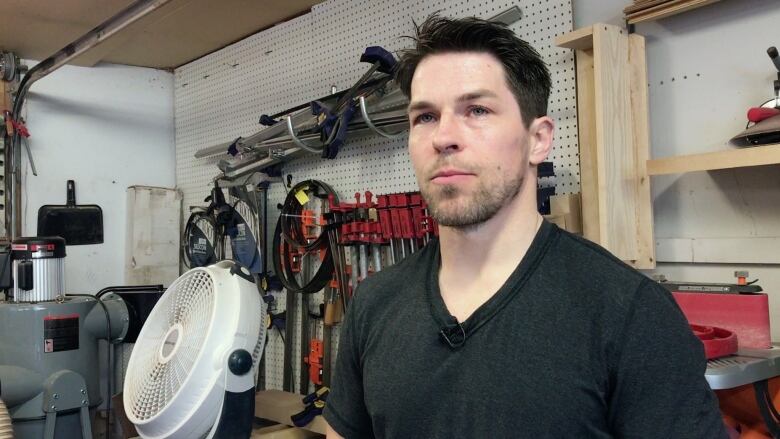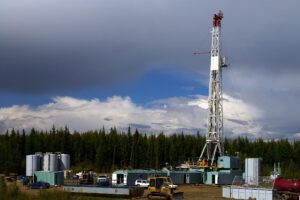Jeffrey Forsyth, CEO of nFluids Inc., shares his insights and success story on bouncing back from layoff in the oil and gas industry published by CBC News Canada.
“Jeff Forsyth has gone through more than one crash in the oil industry and has always managed to come through the other side.”
Bouncing back from a layoff in oil and gas is harder than it used to be
After past industry downturns, many found better work within 3 years, but this time looks different

Like tens of thousands of Albertans who have lost work in oil and gas, Dallas Gara knows what it feels like to be part of a mass layoff.
In 2016, the geophysicist’s job with then Calgary-based Encana Corp. was cut, along with those of about 800 other people.
“Almost the entire team was laid off,” Gara said. “So it was a pretty shocking thing.”
Unable to find work in the industry right away, he turned to entrepreneurship and started two ventures.
But in less than a year, he went from having zero jobs to three. Seven months after being laid off — just when the other two new ventures, including his woodworking company Garawood, started to get off the ground — he got an offer to return to the oil industry. That led to a permanent job with Seven Generations Energy.
Gara considers himself lucky, and a recent Statistics Canada study suggests his experience finding good work after a layoff has become increasingly rare among oil-and-gas workers since the 2015 downturn.
A significant portion of people who lost work in the industry prior to 2015 soon ended up earning more money than they had before. Within three years, the top quarter of them were earning at least $33,000 more than they did the year before they were laid off.
On the other end of the spectrum, a quarter of those people were earning at least $22,000 less after three years.
It’s hard to pin down reasons for the difference between these two groups. Labour-market experts highlight some key factors that can help people transition to a new job, but there’s no singular blueprint for pulling off this challenging task. Many of those who have successfully bounced back say a combination of timing, adaptability, personal connections and luck all played a role.
The study also comes with a bit of a catch. It tracked oil-and-gas workers’ fortunes from as far back as 1995, but full data from the most recent downturn — the one that started in late 2014 — is not yet available. The early indicators, however, look more ominous for those struggling with a layoff since 2015.
The oil and gas industry has gone through booms and busts in the past, but this most recent downturn looks different from the rest.
Job situation more difficult for those laid off in 2015 or later
The study relies on Statistics Canada’s Longitudinal Worker File, a specialized database that allows researchers to track people over time as they change jobs, start businesses, retire or make other changes that affect their income.
Given the lag in some of this data, however, the study wasn’t able to offer a full picture of how people laid off in 2015 or later are faring a full five years later. But despite positive outcomes, such as Gara’s, the available evidence suggests it’s getting harder to find good work.
After past downturns in the industry, between 70 and 85 per cent of unemployed workers found new jobs within a year of being laid off, according to the study. But for those who lost jobs in oil and gas extraction in 2015 or 2016, it was closer to 60 per cent.
Those who lost work in related support activities, such as oil field services and construction, fared a bit better at around 75 per cent, but that was still worse than workers in this field had fared after losing jobs throughout the previous two decades.
A variety of other indicators show the latest downturn in the oil industry doesn’t look like the previous ones, said Carol Howes, who studies the labour market for the PetroLMI division of Energy Safety Canada.
“Generally, it was cyclical: the industry did come back, you started to see hiring again,” she said. “The difference we’re seeing this time around is that we’ve pretty much had a persistent downturn since late 2014, early 2015.”
Success stories are out there
Jeff Forsyth has gone through more than one crash in the oil industry and has always managed to come through the other side.
But he knows his experience is not exactly typical.
Forsyth worked for a startup focused on heavy oil that moved to Calgary from the United Kingdom in 2008. Shortly after arriving, the market crashed amid the global financial crisis. The company recovered, but Forsyth left in 2013 for a job with Cenovus, where he set up a geochemistry department.
Then came the 2015 oil-price crash. He was laid off, amid company-wide downsizing.
Through some contacts, Forsyth connected with a new startup that was looking for a new CEO with his skill set.
“The kind of phrase they used at the time was, ‘You’re a bit of a unicorn: you have technical and business skills,'” he said.

He’s been with nFluids ever since. The Calgary-based company develops industrial products based on nanoparticle technology that can be used in oil and gas drilling and exploration, as well as other applications.
Of course, not everyone can be a unicorn. And Forsyth knows a lot of people — colleagues and friends — who have struggled to find good work after a layoff in oil and gas.
“Some are definitely still unemployed,” he said.
“I think the hardest hit, in my opinion, were the younger engineers. You know, people that were just starting families and maybe hadn’t been on that gravy train with the high bonuses for a long period of time in the early parts of their careers.”
Jobs for engineers, geophysicists, and other positions that were in high-demand when companies were doing more exploration have largely dried up, he said, and many people who used to work in those fields have moved outside of Alberta in search of new opportunities.
‘It almost comes down to who you know’
“It almost comes down to who you know,” said Gara.
“And I hate to say that because it sounds very, very discouraging. But, yeah, for myself, I just have to say, I kind of got lucky by knowing somebody who offered me a job. And I’ve heard of a lot of that happening.”
Even in the past, not many people who were laid off from oil and gas jobs found work in the industry again within a year. Only about one in five managed this feat from 2005 to 2015, according to the Statistics Canada study.
Since 2015, it’s only gotten harder.
“Now, when people are being hired back, the skill requirements have changed, and that’s really being driven by the innovation in the technology that the industry is implementing,” said Howes, with PetroLMI.
“The expectations of workers who are looking at returning to the industry is that they might have to upskill or acquire new skills to be able to to meet the requirements of the new jobs.”
For many former oil workers, Howes said, it’s more feasible to look to other industries where some of their existing skills can transfer. She highlighted petrochemicals, agriculture, logistics and supply-chain management as a few examples.
To that end, PetroLMI provides online resources to see how oil and gas skills compare with other industries, as well as webinars for those looking to make a transition.
Those who are able to shift their skill set to a new type of work often have a few things in common, Howes said.

“It’s really that agility, that versatility, that resilience, where they also view it as an opportunity,” she said. “And that’s a mindset. But it’s hard to do that when you’ve been laid off.”
As someone who shifted to a new industry and then came back to oil and gas, Gara agrees.
“My parents had been in oil and gas since 1976, so it was always kind of a staple for our family,” he said.
“There are people I know who have been looking for oil and gas jobs for three or four years now, and they’re just not coming up,” he added.
“It’s really, really hard.”

















